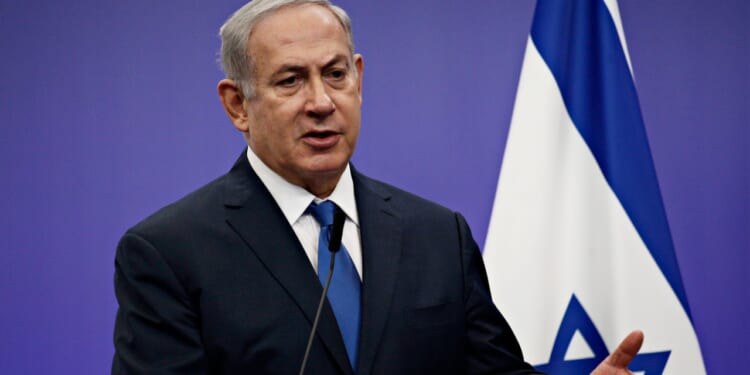Ultimately, the war has shredded more than a few assumptions about Israeli strategic and military limitations.
Exactly twenty-four months after the October 7 massacre that ignited the October 7 War, the first stage of President Donald Trump’s 20-point Gaza peace plan has taken effect. Under the US brokered deal, Hamas began releasing the last group of Israeli hostages, twenty alive and twenty-eight bodies (so far, fifteen returned), in exchange for 2,000 Palestinian prisoners, alongside commitments toward Gaza’s demilitarization and technocratic governance. The ceasefire, while fragile and dogged by disputes over the return of the remains of deceased Israeli hostages, still looks like it will hold.
Following the back-to-back speeches of President Donald Trump and Prime Minister Benjamin Netanyahu in the Israeli parliament in Jerusalem, this moment feels less like the end of a war than the beginning of a new strategic chapter. It is, therefore, an apt time to reflect on the paradigms that have collapsed and those that continue to define the region’s strategic and political trajectory.
For decades, Israel’s own military doctrine, echoed by outside analysts, rested on the belief that survival depended on swift, decisive campaigns designed to restore deterrence and avoid prolonged entanglement. From the Sinai campaign of 1956 and the Six-Day War of 1967 to Lebanon (1982, 2006) and Gaza (2008, 2012, 2014), Israel’s strategic ethos prized speed, initiative, and overwhelming force. The October 7 War shattered that assumption. Over twenty-four months of sustained combat, Israel demonstrated an unexpected capacity for prolonged warfare politically, economically, and psychologically. The public, long accustomed to brief campaigns, absorbed heavy losses without withholding support from the government, while the state maintained operations across multiple fronts.
Equally outdated is the notion that Israel cannot wage more than two or three domains simultaneously. This time, it operated across seven domains: Gaza, Lebanon, Syria, Iraq, Yemen, Iran, and the West Bank without losing strategic coherence. Cyber, intelligence, air, and ground operations converged into a single multidomain campaign. Israel ceased to behave like a besieged enclave and emerged as a regional power with expansive capabilities.
The war also destroyed the myth of sanctuary. From Tehran to Yemen and even Doha, Israel struck its enemies with ease and precision. The era of “safe havens” for planners and financiers of anti-Israeli operations has ended. Alongside this, the legend of underground invincibility collapsed. Iran, Hezbollah, and Hamas had poured vast resources into subterranean networks they believed impregnable. Yet the killing of Hezbollah’s Hassan Nasrallah in a fortified bunker last year put an end to this myth. The Israeli-American strikes on Iranian facilities also underscored that even the deepest tunnels and bunkers may no longer guarantee safety.
Another paradigm fell: the belief that existential peril forges Israeli unity. The October 7 War revealed a society capable of endurance yet fractured in purpose, a democracy resilient, if no longer cohesive.
Equally significant was a revolution in diplomacy. For the first time, Israel’s peace treaties with Arab states translated into active, real-time defense cooperation. Under US CENTCOM, several Arab militaries quietly joined missile-defense efforts against Iranian strikes, an event unthinkable prior to this war. The long-standing pattern of Arab states recalling ambassadors during Israeli wars also broke down: over two years of fighting, Egypt, the UAE, Bahrain, and Morocco maintained diplomatic representatives and security cooperation. Jordan recalled its ambassador in 2023 but has otherwise maintained defense ties. What once signaled rupture now produced quiet coordination.
The United States, too, shifted from a passive supporter to an operational partner, with the alliance maturing into a working, action-based partnership reminiscent of US relations with NATO members.
Not every paradigm fell. Israel’s posture toward nuclear threats remains unchanged. As in 1981 and 2007, it retains the willingness to act alone against existential threats. The moral calculus surrounding the hostage issue also persisted. Once again, Hamas exploited Israel’s deepest moral vulnerability, compelling the release of thousands of prisoners, including terrorists convicted of murdering civilians in cold blood.
This enduring paradox, where the sanctity of life collides with the logic of deterrence, remains embedded in Israel’s national DNA. The tragic dilemma of asymmetric warfare likewise endures: operations against groups embedded in civilian populations almost inevitably yield civilian suffering. Hamas’ consistent use of human shields ensured that Gaza’s tragedy would again frame the global moral debate.
For Hamas, the mythology of “resistance” mutated rather than vanished. Yahya Sinwar’s gambit, attacking Israel not only to spread terror but also to reinsert the Palestinian cause into the international agenda, succeeded, at least symbolically, forcing renewed recognition of a Palestinian state. The wave of Western recognitions that followed reinforced Hamas’ standing vis-à-vis the Palestinian Authority, effectively rewarding violence over diplomacy. Yet the cost was ruinous: Gaza stands devastated, its society traumatized, and its people bearing the price of a movement that mistakes martyrdom for statecraft.
The war also rewired diplomacy itself. The traditional model guided by foreign ministers and professional diplomats yielded to a more personal, ad hoc architecture. The rise of special envoys and brokers such as Amos Hochstein and Steve Witkoff, acting as intermediaries between capitals, recalls the role of Colonel Edward House, Woodrow Wilson’s confidant during World War I. Their influence signals a new era where proximity, intuition, and improvisation matter more than bureaucratic prestige. Trump’s own “art of the deal” approach, once derided, now seems prophetic.
During the earliest months of the war, it appeared that the Shia axis of Iran, Hezbollah, and their proxies had succeeded in undermining the Abraham Accords bloc. Two years later, the opposite is clear: the coalition once shaped by Trump and Netanyahu has re-emerged stronger, its strategic relevance reaffirmed by shared defense and intelligence ties.
Two years on, the Middle East is an even harder, colder, and more pragmatic place than it was before. The region that emerges from the October 7 War will be defined by endurance, adaptability, and personalization, where strength and agility, not necessarily ideology, dictate survival. Whether these shattered paradigms yield a more stable order or merely the next great illusion remains the defining question of the post-October 7 era.
About the Author: Dr. Gad Yishayahu
Dr. Gad Yishayahu is a visiting lecturer in the Department of International Relations at City, St George’s University of London, and a Senior Fellow, Lead Researcher on Security and Crisis at the Cambridge Middle East and North Africa Forum.
Image: Alexandros Michailidis / Shutterstock.com.


















